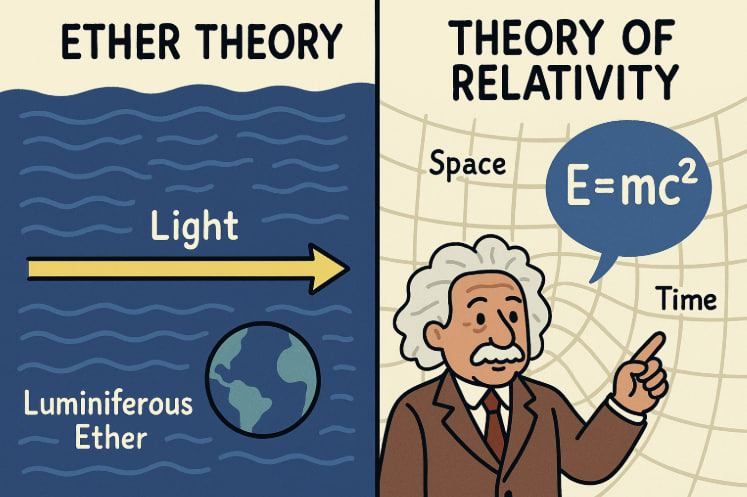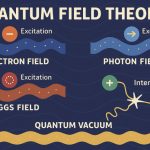At the turn of the 20th century, physics underwent a profound transformation. Two competing ideas sought to explain how light and motion behave in the universe: the Ether Theory and Einstein’s Theory of Relativity. While ether once dominated scientific thought, it was eventually discarded in favor of relativity. However, understanding both is essential to appreciate the evolution of modern physics.
The Ether Theory: The Old Medium of Space
The Ether Theory (or aether theory) originated in ancient times and was formalized in the 19th century. Scientists believed that light, like sound, needed a medium to travel through. This invisible, all-pervasive substance was called the luminiferous ether.
Key ideas included:
- Ether filled all of space, even the vacuum.
- It was stationary and unaffected by matter.
- Light waves propagated through ether, just as sound waves move through air.
- Earth moved through ether, potentially causing a detectable “ether wind.”
Attempts to detect the ether culminated in the Michelson-Morley experiment in 1887. It sought to measure the speed of light relative to the supposed ether wind but found no variation—light’s speed remained constant regardless of direction. This unexpected result undermined the entire theory.
Theory of Relativity: A New View of Space and Time
In 1905, Albert Einstein published his Special Theory of Relativity, rejecting the need for ether entirely. He proposed two revolutionary principles:
- The laws of physics are the same in all inertial (non-accelerating) frames of reference.
- The speed of light in a vacuum is constant, regardless of the motion of the observer or source.
These ideas led to astounding conclusions:
- Time and space are not absolute—they are relative to the observer.
- Time dilation occurs: moving clocks run slower.
- Length contraction happens: objects shorten in the direction of motion.
- Mass and energy are equivalent, as described by the famous equation E = mc².
In 1915, Einstein extended this framework to include gravity in his General Theory of Relativity, describing it as the curvature of spacetime caused by mass and energy—replacing Newton’s idea of gravity as a force.
Key Differences Between Ether and Relativity
| Concept | Ether Theory | Theory of Relativity |
|---|---|---|
| Medium for light | Luminiferous ether required | No medium required |
| Frame of reference | Ether is absolute | No absolute frame exists |
| Speed of light | Depends on ether motion | Always constant |
| View of time and space | Fixed and universal | Relative and interconnected |
| Supported by experiments | Not supported (Michelson-Morley) | Strongly supported |
Einstein’s theory offered a simpler, more accurate framework that matched experimental evidence and later became foundational for modern physics, including GPS technology, black hole research, and cosmology.
Is Ether Theory Truly Dead?
Despite being abandoned by mainstream science, modern analogs of “ether” have emerged in quantum field theory. The vacuum is now understood as full of quantum fluctuations, and some theoretical frameworks explore preferred reference frames under new names. However, none violate the core principles of relativity.
Thus, while the classical ether is obsolete, the concept of a “structured vacuum” lives on in modern physics under new paradigms.
Glossary
- Luminiferous ether — A hypothetical medium once believed to carry light waves through space.
- Michelson-Morley experiment — A 19th-century test that disproved the existence of ether.
- Special Relativity — Einstein’s 1905 theory that redefined time and space without ether.
- General Relativity — Einstein’s 1915 theory describing gravity as spacetime curvature.
- Time dilation — A relativistic effect where time slows for fast-moving observers.


